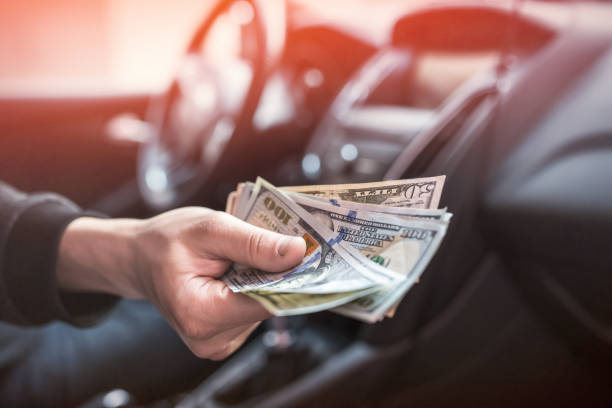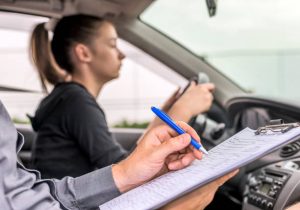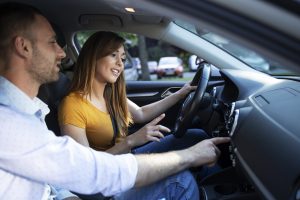Learning to drive is an exciting and essential milestone for many people in the UK. One of the first decisions learners face is choosing between manual and automatic driving lessons. While the difference may seem small at first, it affects not only how you learn but also the overall driving lesson costs, your flexibility after passing, and your long-term value as a driver.
This comprehensive guide by Aram Driving explores the pricing, lesson packages, and long-term value of both manual and automatic driving lessons. It offers an objective look at cost differences, efficiency, and suitability so you can decide which option aligns best with your learning style and goals.
Understanding the Basics
Before comparing lesson costs, it is important to understand what sets manual and automatic driving lessons apart.
What Are Manual Driving Lessons?
Manual driving lessons involve learning to operate a car that has a clutch pedal and a gear stick. Learners must master clutch control, gear changes, and coordination between both hands and feet.
Key characteristics of manual lessons:
- You learn full control of the car, including the clutch and gears.
Manual driving lessons teach you how to coordinate the clutch, accelerator, and gears, giving you greater control over your vehicle’s performance. This skill helps you handle varied road conditions confidently and improves your driving awareness. - Manual cars generally offer better control in diverse driving conditions.
Driving a manual car allows for smoother handling on steep hills, slippery roads, or when overtaking. The ability to choose gears manually ensures more precise control over speed and power in different environments. - Once qualified, a manual licence allows you to drive both manual and automatic cars.
Earning a manual licence gives you the freedom to drive both types of vehicles legally. This flexibility makes it easier to adapt to different cars, whether for personal, work, or travel purposes.
This flexibility makes manual lessons a popular choice for those who want to keep all driving options open in the future.
What Are Automatic Driving Lessons?
Automatic cars do not have a clutch pedal or gear stick for manual shifting. The car handles gear changes automatically, allowing you to focus more on steering, road awareness, and positioning.
Key characteristics of automatic lessons:
- Easier and quicker to learn as there is no clutch control.
- Ideal for learners who prefer a simpler learning process.
- Suitable for those who plan to drive mainly in busy city traffic.
However, if you pass your driving test in an automatic car, your licence only permits you to drive automatic vehicles, which may limit your options in the future.
Driving Lesson Costs: Manual vs. Automatic
The cost of driving lessons depends on several factors, such as your location, the driving school, and the transmission type. On average, automatic lessons cost slightly more per hour than manual lessons.
Average Lesson Prices in the UK
The table below shows a general overview of current lesson costs in the UK:
| Lesson Type | Average Cost per Hour | Typical Price Range |
| Manual Lessons | £30 – £35 | £28 – £38 |
| Automatic Lessons | £34 – £40 | £32 – £45 |
Although the difference per lesson may only be a few pounds, the total cost can increase significantly depending on how many hours of instruction you need before taking the test.
Factors That Influence Lesson Pricing
Several elements determine the price of driving lessons in the UK:
- Location: Larger cities such as London or Manchester typically have higher rates due to demand and operational costs.
- Instructor Experience: Highly experienced instructors may charge more, but their methods can help you learn faster.
- Vehicle Type: Automatic cars generally cost more to maintain, contributing to higher lesson prices.
- Lesson Duration: Longer lessons or block bookings often provide better hourly value.
- Time of Booking: Peak hours or weekend lessons can cost more than off-peak times.
Comparing Lesson Packages and Pricing Options
Most driving schools provide flexible lesson packages to meet different learner needs. Choosing the right one can have a big impact on your total expenditure.
Hourly vs. Block Booking Packages
| Package Type | Description | Benefits |
| Hourly Lessons | Pay per session, no commitment | Flexible but often more expensive overall |
| Block Bookings | Pay upfront for multiple sessions | Saves money per lesson and ensures consistency |
| Intensive Courses | Several lessons over a short period | Quicker results but higher upfront cost |
Block booking offers are popular among learners because they combine affordability with structured learning. Many schools also include mock tests within package deals, allowing students to prepare more effectively.
Evaluating Long-Term Value
When comparing manual and automatic lessons, consider not just the hourly cost but also how many lessons you may need. For example, automatic learners often need fewer lessons to reach test standard, which can offset the higher hourly rate.
Driving schools offer various lesson packages to suit different experience levels and goals, making it easier to choose a plan that provides both value and flexibility.
Cost Efficiency Over Time
Comparing lesson prices is one thing, but understanding long-term costs gives a clearer sense of value.
Learning Curve and Time to Pass
Manual lessons usually take longer to master because of clutch control and gear management. Automatic learners typically progress faster, needing fewer lessons overall.
Average lessons required:
- Manual: 40 – 45 hours of tuition
- Automatic: 30 – 35 hours of tuition
While automatic lessons may cost more per hour, the total expense could still be lower if you pass sooner.
Fuel Efficiency and Maintenance Costs
Manual cars often deliver better fuel efficiency and have lower maintenance expenses. Automatic cars, however, can consume more fuel and incur higher repair costs.
| Factor | Manual | Automatic |
| Fuel Efficiency | Higher | Slightly lower |
| Maintenance | Lower | Higher due to transmission system |
| Learning Duration | Longer | Shorter |
| Flexibility | Can drive both types | Restricted to automatic |
Choosing Between Manual and Automatic Lessons
Your choice between manual and automatic should align with your personal goals, learning style, and driving preferences.
Personal Preferences and Flexibility
Manual driving offers versatility and a sense of control. It is a good option for learners who may want to drive different types of vehicles in the future. Automatic driving, however, is ideal for those who want a straightforward, less stressful experience.
Instructor and Vehicle Availability
In some UK regions, automatic instructors and vehicles may be less available, leading to longer waiting times. Before deciding, check local availability through driving schools that offer both manual and automatic options depending on location.
Table: Manual vs. Automatic Cost Summary
| Category | Manual | Automatic |
| Average Hourly Rate | £30 – £35 | £34 – £40 |
| Lessons to Pass | 40 – 45 | 30 – 35 |
| Estimated Total Cost | £1200 – £1575 | £1020 – £1400 |
| Licence Type | Manual & Automatic | Automatic Only |
| Maintenance | Lower | Higher |
| Learning Curve | Steeper | Easier |
This breakdown highlights that while automatic lessons have higher individual costs, they can lead to faster completion and potentially lower overall expenses.
Final Thoughts
When comparing manual vs. automatic driving lessons, it is clear that both have distinct cost structures and benefits. Manual lessons typically offer long-term value and flexibility, while automatic lessons provide quicker results and an easier learning process.
The right choice depends on your learning pace, budget, and driving goals. Consider both lesson pricing and the number of hours needed to pass when calculating total costs.
By understanding the driving lesson costs and comparing both options carefully, you can make an informed decision that balances efficiency, affordability, and future driving flexibility.
If you’re ready to begin your driving journey, contact us today to learn more about available lesson options and start preparing for your driving success.
Frequently Asked Questions (FAQs)
Are automatic lessons always more expensive than manual ones?
Yes, automatic lessons usually cost slightly more due to higher car maintenance and fuel consumption. However, since you may need fewer total lessons, the overall cost can be comparable to manual lessons.
Which option offers better long-term value?
Manual lessons offer broader flexibility because a manual licence allows you to drive both transmission types. Automatic lessons, however, may provide better value if your main goal is to pass quickly and drive modern automatic cars.
How many lessons do learners typically need before passing?
Learners need an average of 30 to 45 lessons, depending on individual progress and transmission type. Practising outside professional lessons can also help reduce total lesson costs.
Is it easier to pass the driving test in an automatic car?
Yes, many learners find the automatic test easier because there is no need to control gears or the clutch. This allows them to focus entirely on steering, observation, and decision-making.
Can I change from automatic to manual lessons later?
You can switch, but you will need to retake your test in a manual vehicle to earn a full manual licence. Choosing the right type from the start can save both time and cost.
Do automatic cars have higher maintenance costs?
Yes, automatic vehicles generally cost more to maintain due to complex gearboxes. Manual vehicles are simpler to repair, making them more economical for long-term use.








